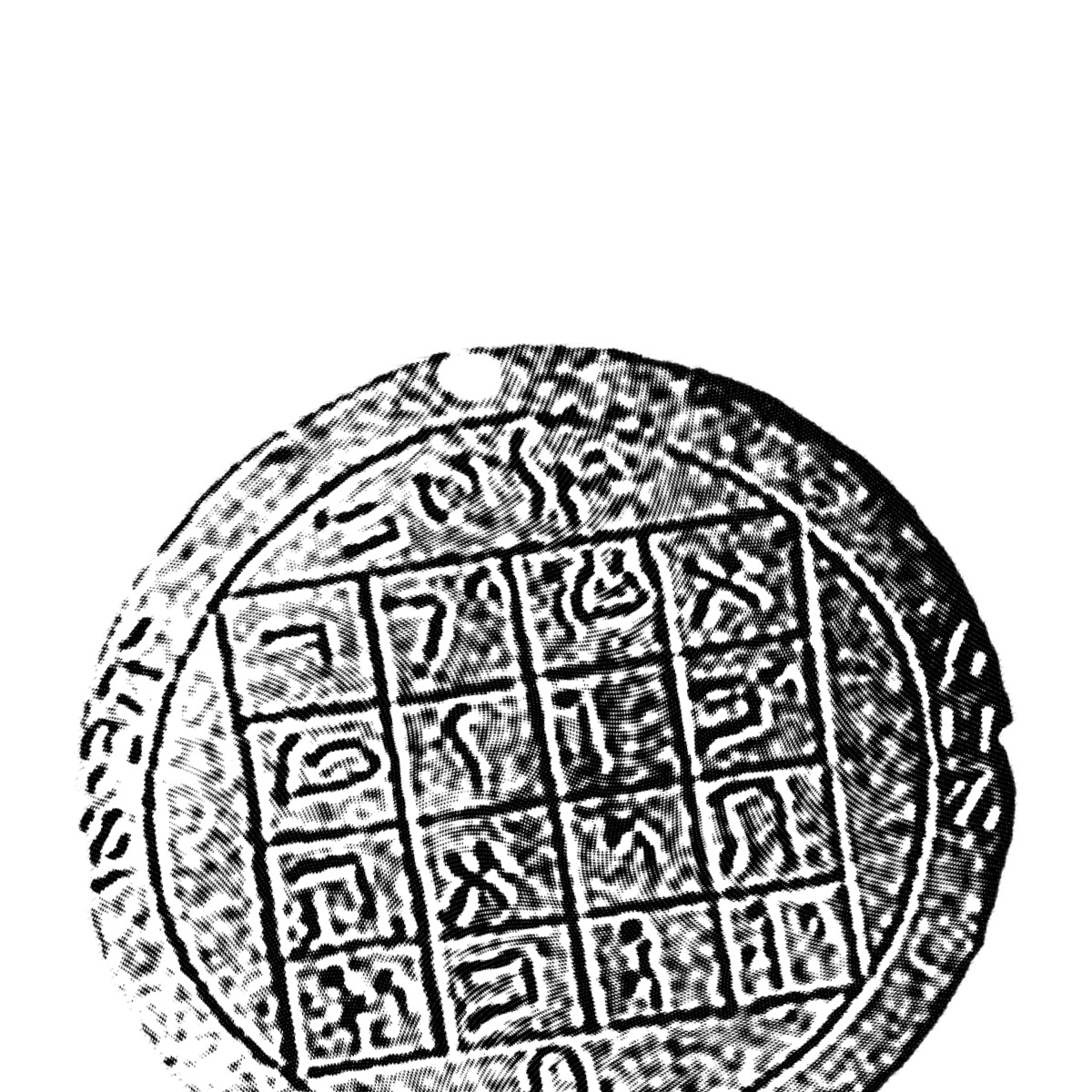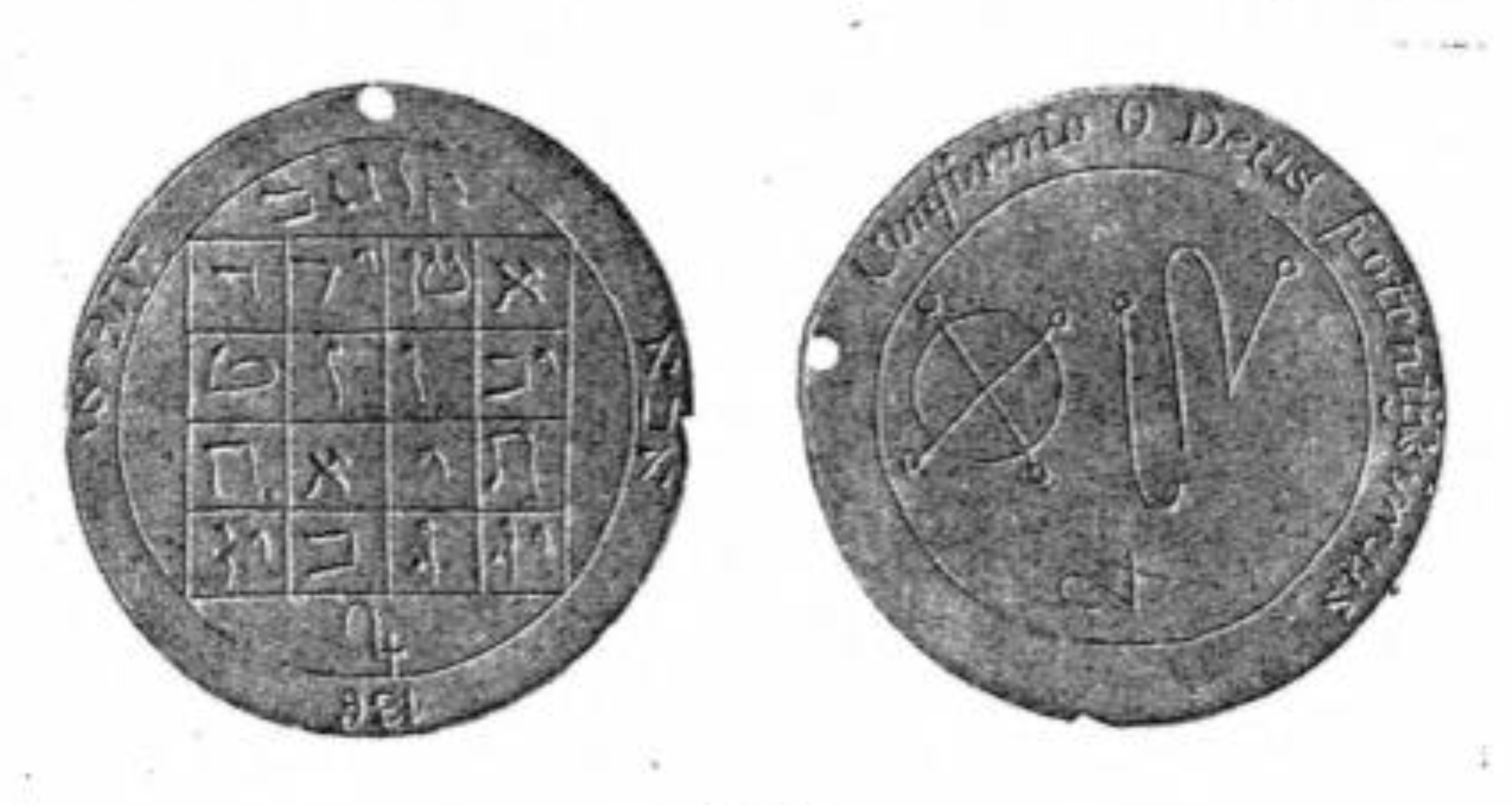Joseph Smith's Jupiter Talisman

Timeline of Events
1885
1902
1937
1974
1989
Reed Durham expresses regret for his original statements, calling the idea that Joseph had a Jupiter talisman "highly questionable."[7]
Did Joseph Smith own a Jupiter talisman?
Probably, but the evidence is circumstantial. The earliest historical reference was 58 years after Joseph died,[8] but there are other corroborating accounts as well.[9]
What is a Jupiter talisman?
A Jupiter talisman is a metal coin-like object with engravings of sayings and symbols on it.[10] It's named after Jupiter because the symbols on it relate to the Roman god Jupiter.[11]
The design of the type of Jupiter talisman that Joseph possibly owned originated in an 1801 book about occult philosophy, magic, and Christianity.[12] The one Charles Bidamon[BIO] said belonged to Joseph Smith was probably a silvery, metal disc[13] with a Hebrew number table on one side and astrological symbols on the other.[14]

What evidence is there that Joseph owned it?
There's a thirdhand account that claimed Joseph had the Jupiter talisman with him when he died.[16] However a legal declaration of things Joseph had on him when he died doesn't mention anything like the talisman.[17]
Joseph never mentioned anything related to the Roman god Jupiter or the talisman. Joseph did have an interest in Hebrew, Latin, and God though[18]—and the rumored talisman has religious inscriptions in Hebrew and Latin.[19]
There's not really a consensus on whether Joseph actually owned it.[20]
Where is the Jupiter talisman today?
According to Reed Durham,[BIO] it is kept in the Wilford Wood Collection in Utah, where he examined it in 1974.[21]
How did it get there?
In about 1937, Charles Bidamon responded to a want ad in the Nauvoo Independent looking for Mormon documents and relics.[22] He said he had several items, including the "silver pocket piece."[23] He said that he received this pocket piece from his father, Lewis Bidamon,[BIO] who was the second husband of Emma Smith.[BIO][24] That same year, Latter-day Saint collector Wilford C. Wood[BIO] purchased the "silver pocket piece."[25]
Other items obtained from Bidamon included part of the Pearl of Great Price manuscript, a credit statement from 1839, and several other authentic documents.[26]
So does it matter if Joseph Smith did have a Jupiter Talisman?
Maybe. For modern people, this may seem weird.[27] Joseph Smith believed revelation, spiritual gifts, and powers came from God.[28]
Related Question
Did Joseph adopt other folk magical practices, like "peep stones"?
Read more in Seer Stones
Wasn't Joseph Smith sometimes referred to as "Baurak Ale" in meeting minutes and in some revelations? And couldn't that be a variant of Barchiel, which is the traditional archangel of guardian angels that also oversees Jupiter? Or Baraq’el which means "lightning of god" which is possibly referring to Zeus, the Greek version of Jupiter?
Possibly. Baurak Ale is also a name from the Book of Job (Barachel).[29] In some revelations, Joseph Smith was referred to as Baurak Ale, which meant "God bless you" in Hebrew.[30]
- Todd M.
“I have often wondered whether the talisman was referring to the god Jupiter or the planet Jupiter. I see no evidence that Joseph Smith worshipped the god Jupiter but part of his folk beliefs were that the planets have influence over us.” - Matthew M.
“Revelation is a supernatural power. Urim and Thummim are supernatural stones. Jesus Christ is a supernatural being, as are the Father and the Holy Ghost. Somehow the term has taken on unholy connotations. Supernatural: not of the usual, not natural, not understood by science.” - Street Rat
“Joseph Smith had a great interest in Hebrew. A coin covered in Hebrew notation would probably have piqued his interest. He never referenced it, claimed it as a source of revelation, or made any indication of paying homage to Jupiter. Out of all issues and concerns, this is minor.” - Cameron B
“I own one. It’s cool, and Joseph Smith was and is a Prophet of God.” - Geoff J.
“I think it’s fascinating, whether he owned it or not. Joseph in using his gift of translation had the ability to use objects to aid him in translation. Often, such as in translations of the Bible & papyrus, physical objects were simply just present nearby & translating came fluidly.”



 about this topic
about this topic